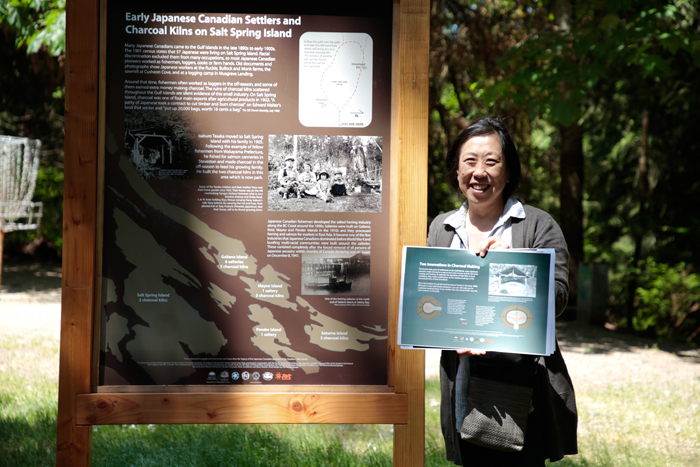Canada’s Asian History Month has special significance in the Gulf Islands this May with the publication of a new book exploring the history of Japanese charcoal kins.
Published by the Japanese Garden Society of Salt Spring Island, Island Forest Embers – The Japanese Canadian Charcoal Kilns of the Southern Gulf Islands is the work of six contributors. Steve Nemtin, Brian Smallshaw, Chuck Tasaka, Suanne Fournier, Munehiko Iwaya and Rumiko Kanesaka all participated in the investigation of this unique cultural artifact.
Two charcoal kilns built by Isaburo Tasaka in the early 1900s have been discovered and restored at Mouat Park, and 13 other have been identified in the Southern Gulf Islands. The 68-page booklet gives the history of charcoal and its local production, and some insights into the lives of early Japanese Canadian settlers in the area.
“Our story began with the restoration of one of the two Salt Spring kilns in 2015,” press material for the book’s May 15 launch explains. “While we were working on the restoration, we learned from local historical kiln expert Steve Nemtin that there were a number of similar kilns on Galiano, Mayne, Saturna, and possibly the other islands too. Steve has been fascinated by the kiln ruins of the islands and began researching them over 30 years ago. Nobody else seemed to know anything about them, while the kilns themselves silently returned to the earth. The Japanese Garden Society decided to embark on a research project to learn more about them, and managed to secure funding.”
Little is known about the kilns’ builders because the entire Japanese Canadian population of the coast was forcibly removed to internment camps in the interior in 1942. To learn more, the contributors spent a year visiting kilns on private properties on the other Gulf Islands and long hours digging through the archives.
A small promotional pamphlet published in 1902 and held by the Salt Spring Archive listed charcoal production as one of Salt Spring’s four largest exports. In that same year, another record tells of a group of Japanese Canadians making 20,000 bags of charcoal.
“Not many people are aware of the thriving Japanese Canadian communities that existed on the Southern Gulf Islands before WW2. [Our book] is an effort to reconnect with the forgotten past and reevaluate the contribution of Japanese Canadians pioneers to the social and economic life of the islands,” the authors state.
May 15 also saw the installation of several panels describing the charcoal kilns’ history in Mouat Park.
For more on this story, see the May 16, 2018 issue of the Gulf Islands Driftwood newspaper, or subscribe online.

